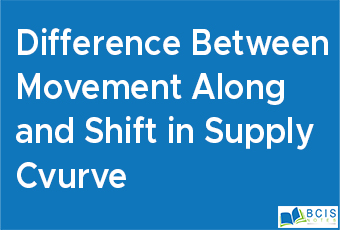
Difference between movement along and shift in the supply curve
Movement along the supply curve is defined as the graphical representation of the change in the supply of any commodity due to the change in its own price, other things remaining constant. This condition is known as extension of supply. It can be graphically shown by the movement from a point to another point of the same supply curve.
The change in the supply curve other than the price determinant is said to be the shift in the supply curve. A shift in supply curve occurs when the producers are willing to offer more or less of a commodity due to the change in other determinants of supply except for price. In other words, it occurs when the supply of goods and services changes even when the price does not change.
The difference between movement along and shift in the supply curve is given below:
| Movement along the supply curve | Shift in the supply curve |
|
|
| 2. It holds the assumption of ‘Ceteris Paribus’ | 2. It does not hold the assumption of ‘Ceteris Paribus’ |
| 3. Price is only a responsible determinant for movement. | 3. Income, technology, supplier’s expectations, number of sellers, etc. are responsible for the shift in the supply curve. |
4. types:-
|
4.types:-
|
| 5. It is also called ‘ change in quantity supply’ | 5. It is also called ‘change in supply’ |
 |
 |
You may also like Measurement of Elasticities

Leave a Reply